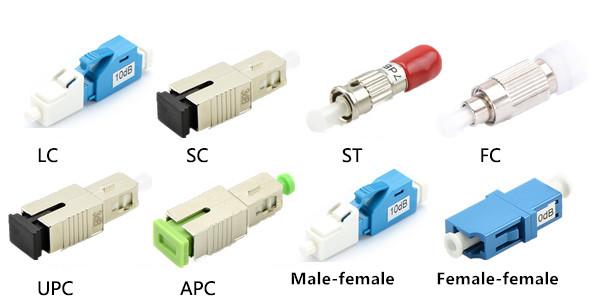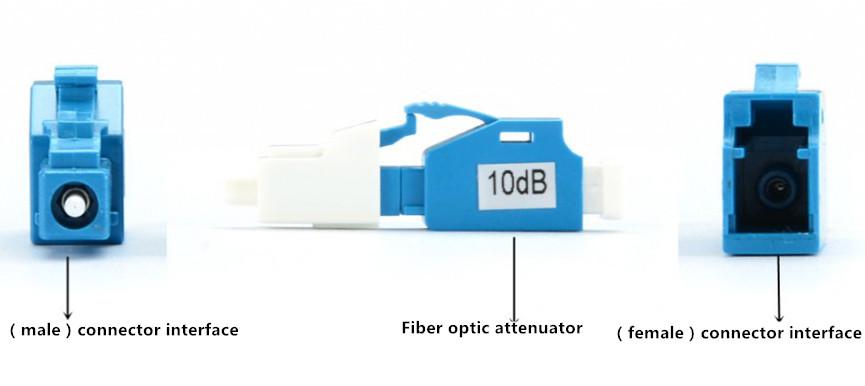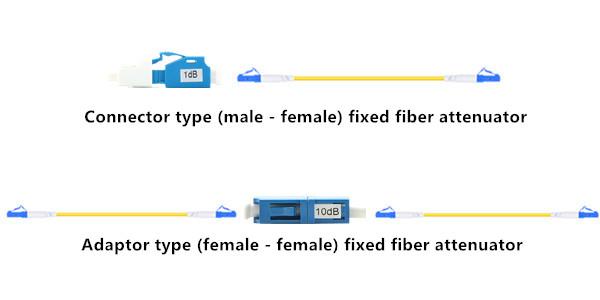- Related articles
- All Cisco DWDM-X2-50.12's information (List price, Specs, Datasheet PDF, Compatibility mat
- What is 1000BASE Transceiver?
- What is 1000BASE-X?
- The Datasheet of Cisco GLC-T SFP Transceiver
- Optical Transceivers for Cisco SF250-48-K9-UK Switch
- Optical Transceivers for Cisco SG350-10P-K9-UK Switch
- Several Best-Selling Cisco GBIC Transceivers
- Optical Transceivers for Cisco N5020P-4N2232PF-B Switch
- Optical Transceivers for Cisco N3K-C3064PQ-10GX Switch
- EoS and EoL News for the Cisco 10GBASE DWDM XENPAK Modules

Fiber attenuator, as the name suggests, that is used to reduce the optical signal power of optical devices. Many people may think that the power of the optical signal as much as better, in most cases people even use fiber amplifier to increase the power of optical signals. However, in some cases, due to the signal source and the uncertainty of the transmission distance, the intensity of the line in the optical signal may lead to excessive light receiver load, resulting in signal distortion, then you need to use fiber attenuator to adjust the power of the optical signal. Depending on the application, the optical attenuator can be divided into an adjustable optical attenuator and a fixed optical attenuator. This tutorial will detail the basics of fixed optical attenuators.
Introduction to fixed optical fiber attenuator
The attenuation of the fiber attenuator is fixed (for example, 1 dB, 5 dB, 10 dB, etc.), the current fixed fiber attenuator on the market attenuation power between 1 dB to 30 dB, generally used for telecommunications networks, fiber test equipment, Local area network (LAN) and cable television (CATV) systems. To some extent, the fixed fiber attenuator shape is similar with fiber optic connector, it can also be called a connector-type fiber attenuator, but the two are essentially different. As shown in the following figure, the fixed fiber attenuator usually has two interfaces, namely the male connector interface and the female connector interface; where the male connector interface is used to plug in the receiver of the device or the adapter on the panel adapter, the female connector connector is used to connect the fiber jumpers. Fixed fiber attenuator naming is usually used "connector interface type + attenuation power + fixed fiber attenuator" in the form, such as LC 5dB fixed fiber attenuator, the connector interface type LC, attenuation power of 5dB.
The types of fixed fiber attenuator
According to the type of connector interface, fixed fiber attenuator can be divided into LC, SC, ST, FC, MU fiber attenuator, etc., in addition, each connector interface fixed fiber attenuator can also be broken down into APC and UPC grinding and polishing methods. In multimode fiber-optic transmission applications, there is little exposure to light receivers, so fixed fiber attenuators are often used in single-mode fiber optic applications. The most commonly used fixed fiber attenuators are LC (male) -LC (female) fiber attenuators and LC (female) -LC (female) fiber attenuators, where LC (mother) -LC (female) fiber attenuator is a special attenuator, both ends of which are female connector interfaces, are also known as adapter-type fixed fiber attenuators.

How to use a fixed fiber attenuator
As shown in the figure below, the fixed fiber attenuator is always used at the receiving end of the fiber link, which makes it easy for people to test the optical power before and after attenuation.
The following describes the use of connector type (male-female) fixed fiber attenuator and adapter type (mother-mother) fixed fiber attenuator in the form of illustration. Connector (male-female) fixed fiber attenuator of the female used to connect fiber jumpers, the male head can be directly inserted in the network equipment; both ends of the adapter (mother-mother) fixed fiber attenuator should be connected to optical fiber Jumpers.























































